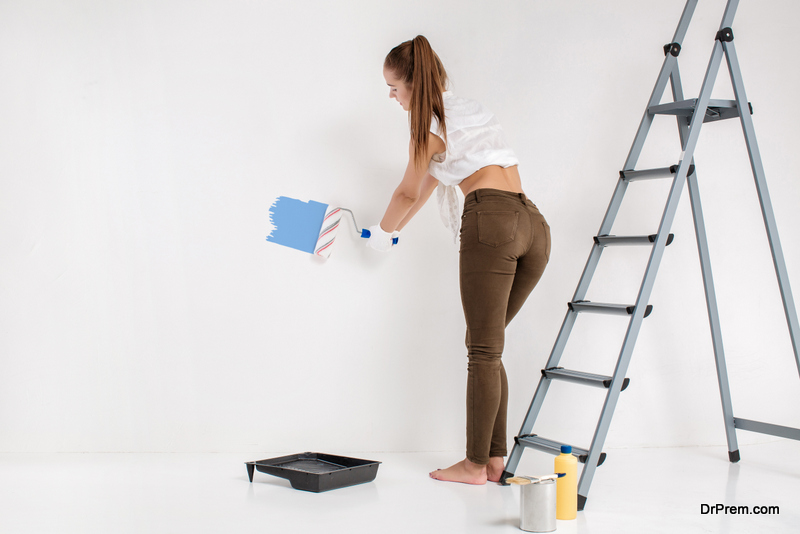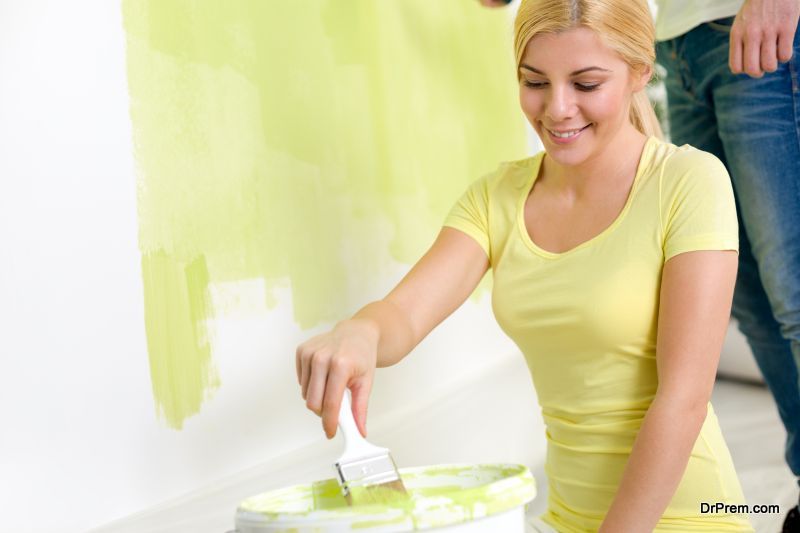Painting your house is one of the tasks that are an ordeal due to one simple reason – The dripping. The kind of mess created after painting a wall or a fence is enough to make you absolutely exhausted. This might also make question your decision of painting it in the first place. Paint splattering onto the grass is also another problem.
If you are an amateur painter, you might not have an idea about how to avoid drips while painting house. Hence, there are some tips and tricks that you can follow in order to ensure a no-drip paint job.
Some ways of avoiding drips while painting house include:
1. Investing in good brushes:

Good brushes are an investment and can ensure a no-drip paint job. Having a good brush can save you tons of time while painting your house. The brush has two extremely important roles attached to it. Firstly, it is used as a shovel to transfer the paint from inside the container onto the surface in question. Secondly, it is used to move the liquid paint on the surface in order to coat it.
Sash brushes, which are angular in shape, are the best for this purpose. The amount of bristles present is directly proportional to the amount of paint that can be held by the brush. These also have to be cleaned frequently and thoroughly to make them last longer. And hence, brushes are one of the best ways of avoiding drips while painting house.
2. Ensuring that there is no paint on the grass:
Getting paint on the grass while painting the house is one of the biggest painting mistakes to avoid. This happens a majority of time when you are painting a fence. In order to prevent this from happening, an old dustpan can be placed under the paint bucket. Placing newspapers right below the section of the walls being painted is another method. The newspapers and dustpans can prevent the paint from dripping everywhere on the grass. Once the work is complete, removing these articles would remove all the debris. This would save you from the ordeal of pulling out dirt and paint from the grass manually.
3. Using a brush pot:

One of the simplest ways of ensuring a no-drip paint job is to use a brush pot. It is never advisable to work from the original can of paint that is full to the brim. Using a small, empty can as a brush pot can be handy and avoid paint splatters. This container can allow you to tap your brush on the inner walls to remove the excess paint.
The level of paint in the brush pot should always be below the length of the bristles. This should ensure minimum splattering. The tapping motion ensures that the brushes are saturated with colour without dripping. Do not scrape both the sides of the brush on the edge of the lid. This removes most of the paint that would be required to be applied.
4. Using anti-drips:
One of the simplest ways to avoid paint drips is by using rubber band grips. A large, strong rubber band can be vertically stretched around the can of paint. This should be done so that it goes across the mouth of the can. This leaves a large amount of space to dip the brush. The trick is to remove excess paint from the brush is by swiping it along the rubber band.
In the same way, an anti-drip can also be constructed using duct tape. But if the tape is wider, it is advisable to place it near the edge of the paint can. Punching holes in the top rim of the paint container can also prevent paint-splatter. After scraping the paint off the brush, it fills the grooves on the outer rim. Thus the paint returns to the can itself.
5. How to remove paint drips:
 Paint drips are the biggest nightmares that arise while painting the house. How to remove paint drips, though, is a fairly simple process. If the paint has not dried yet, it might be possible to brush it off. The key is to use brush strokes towards the same way as has been used in the areas surrounding it.
Paint drips are the biggest nightmares that arise while painting the house. How to remove paint drips, though, is a fairly simple process. If the paint has not dried yet, it might be possible to brush it off. The key is to use brush strokes towards the same way as has been used in the areas surrounding it.
Keeping the general direction avoids cross-strokes that might appear unsightly. If the paint feels sticky, then it’s important to not to brush it, which might aggravate the problem. Sometimes, it is quite important to let the paint drop and its surrounding areas dry before trying to remove it. A scraping tool such as razor blades or clean scrapers can also be used. Once the stain is removed, sand paper should be used for smoothening it in the direction opposite to the drip. Then another coat of paint should be applied.




